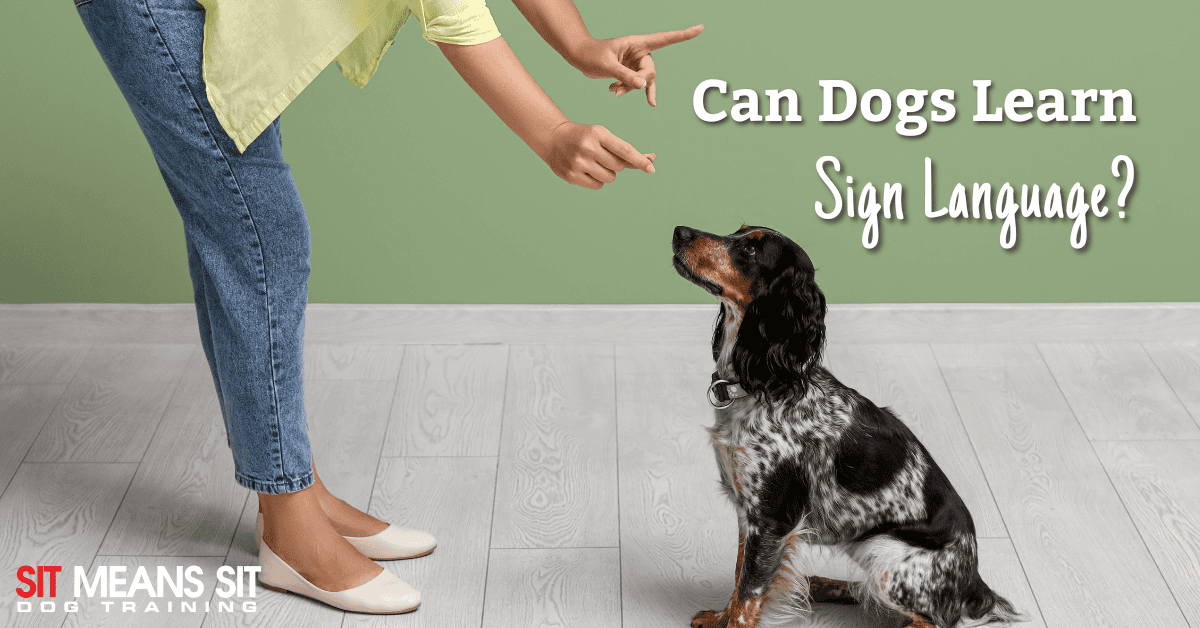Deaf Awareness Week was from September 23rd through the 29th! And even though it’s passed, it’s always a great time to learn more about Deaf culture and education, such as sign language. Have you ever wondered if your canine companion can learn sign language? Dogs are incredibly intelligent creatures that can learn a variety of skills, including sign language. Keep reading to learn the history and science behind canines and sign language, as well as why teaching your pup sign language is beneficial.
History of Canines and Sign Language
American Sign Language (ASL) has been around for over 200 years and helps countless people who were born Deaf or lost their hearing communicate with others. ASL has been used throughout history for owners to communicate with their pets and is traditionally the most commonly used form of sign language taught to canines.
In recent years, a form of sign language that is designed for communicating with dogs has developed. This form is called K9Sign and involves specific dog-based signs that your pup learns and signs back to you. K9Sign allows dogs to communicate their needs to humans through a set of signs that they can easily perform. Dogs who know sign language can effectively communicate and form a closer bond with their owner.
Do Dogs Respond to Hand Signals?
Several studies have indicated that dogs can understand and respond to hand signals. These intelligent animals respond consistently to verbal cues, hand signals, or a combination of the two. A canine’s accurate understanding of non-verbal commands largely stems from their evolved understanding of body language.
Additionally, some research findings indicate that hand signals accompanied by matching body language may be more effective than verbal commands for dogs. Many dogs recognize hand signals they gradually picked up through observation, even if they were never officially taught them. Since most dogs excel at picking up non-verbal cues, teaching them sign language is easy with consistent training.
Benefits of Teaching Your Dog Sign Language
Whether your furry friend is Deaf or hearing, teaching them sign language has numerous benefits. Owners of dogs that understand hand signals can confidently give them commands in noisy environments and from a distance. Hand signals are also beneficial for senior pups. Since older dogs often struggle with verbal commands as they lose their hearing, teaching them hand signals while they’re young will come in handy. Additionally, the training process of teaching your pup sign language provides them with mental stimulation and alleviates boredom. Overall, using sign language with your pup improves communication and focus on both ends, leading to positive outcomes.
Tips for Teaching Hand Signals
Using sign language with Fido may seem intimidating, but with consistent training, they’ll pick it up in no time. When teaching your pup hand signals, keep these tips in mind.
- Practice in a quiet spot that’s free of distractions
- Make sure you have your pup’s full attention when teaching them hand signals
- Use treats and praise to reward your dog when they get something right
- Once your pup has connected a hand signal with the verbal command, drop the latter part
- No matter which signs you teach your dog, be consistent!
- If your dog is Deaf, start with a “watch me” signal to get your pup’s attention
- Be patient with your pup and practice often
Check Out These Related Blogs for More Tips!
Helpful Tips for Caring for a Deaf Dog

